St Mawgan Station Personnel and community volunteers plant hundreds of trees, in the fight against climate change and aim for a 2040 NetZero future of the RAF.
Perched high on the steep Cornish cliffs overlooking the Atlantic Ocean, RAF St Mawgan stands alone, surrounded by rolling hills, babbling brooks, high moors and ancient forests. The miles of golden sands which fringe this empty stretch of the North Cornish coast are quiet for much of the year, free from the hustle and bustle of summer tourists with only the core crew of local surfers and dog walkers braving the elements. This is a wild space; a remote and rocky peninsular that is battered for much of the year by the full force of whatever the North Atlantic can throw at it. It is this raw diversity of landscapes, the blustery but temperate climate and the fragile ecosystems which ensure that RAF St Mawgan remains one of the most important locations for biodiversity and the fight against climate change in the region.
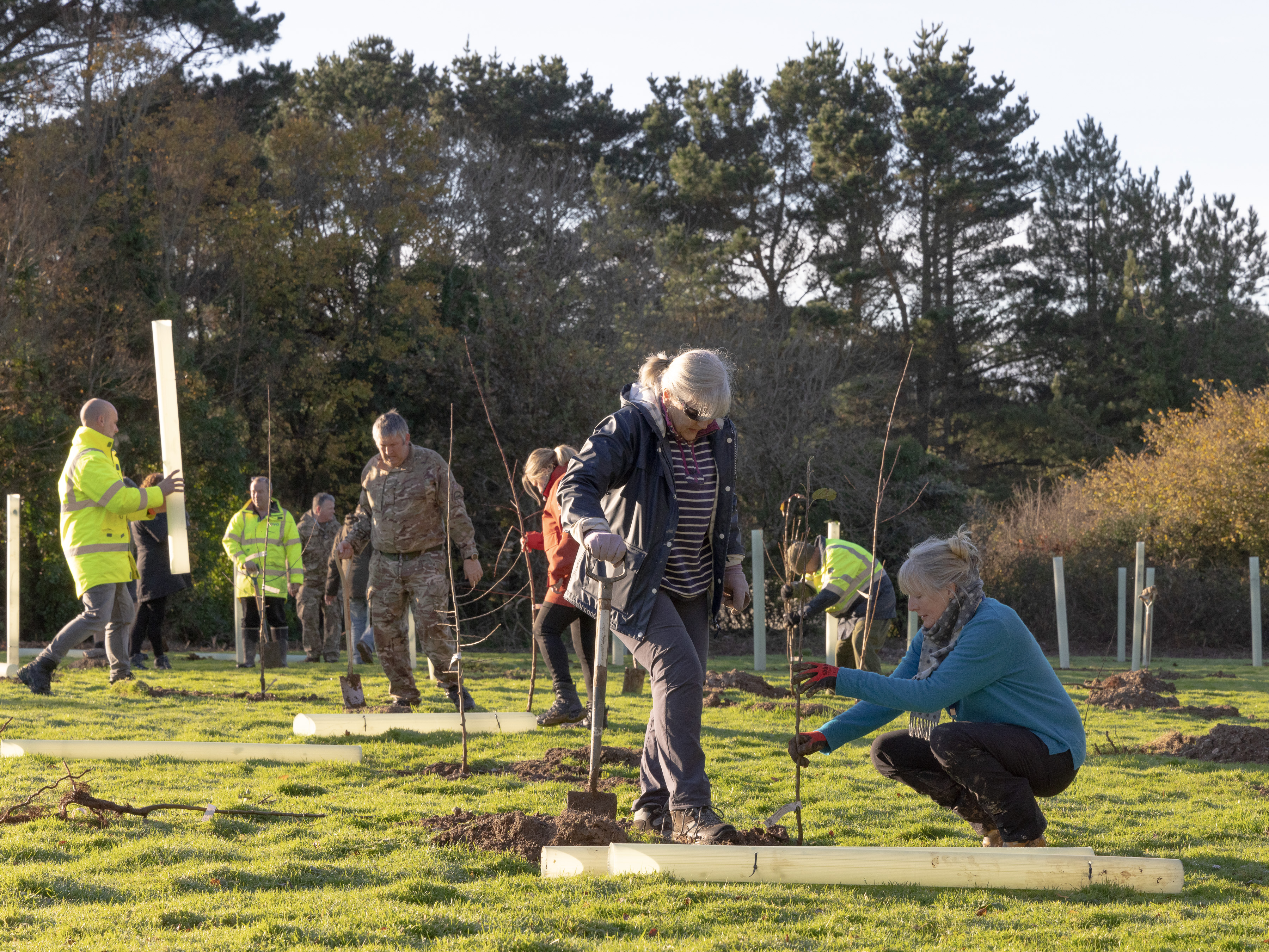
Following the end of the Cold War the Station’s future looked uncertain, and with a diminishing workforce, large swathes of the camp’s sprawling estate have been left to be recaptured by nature. Now though, RAF St Mawgan is enjoying a resurgence in the role it plays in protecting the UK, with large scale projects and investment destined to catapult it back into the limelight, protecting the western approaches from threats in the air and at sea – both above and below the surface. It is at the very heart of this transformation though, that the base is quietly experiencing a green revolution on a scale unprecedented in its 80 years of operation, one which has significant importance for the whole of Cornwall and beyond.
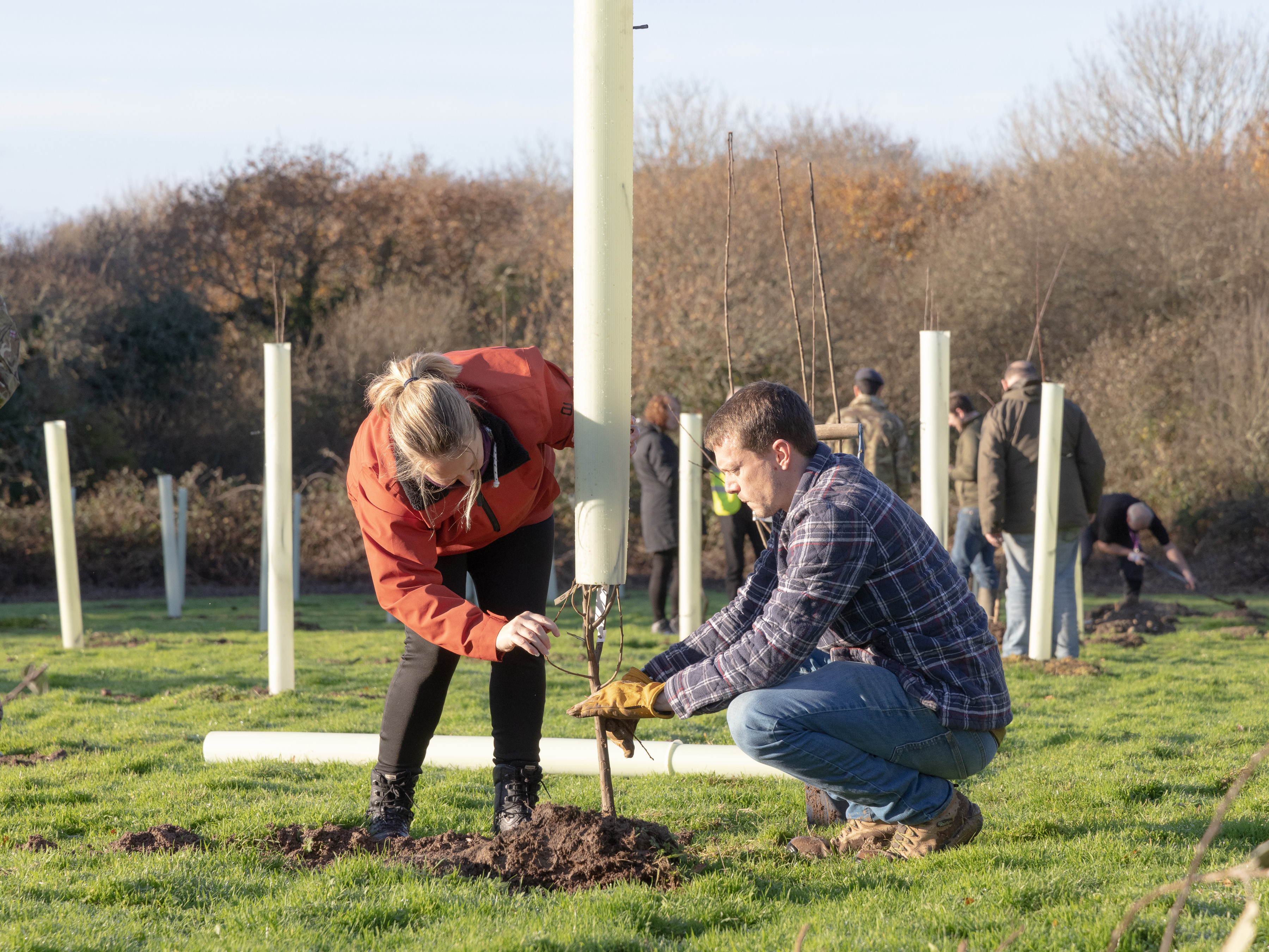
It was a bright and clear day at St Mawgan, as the final leaves of autumn were buffeted from the trees by a fresh sea breeze before the team of bright red faces and sweaty brows. A hive of activity, dominated by the swinging of spades, thumping of muddy boots and the busy hubbub of excited children arriving after school, as row upon row of fruit trees are planted in an unused grassy corner of the Station, one of four separate planting sites at RAF St Mawgan which are collectively coined the ‘Platinum Orchard’.
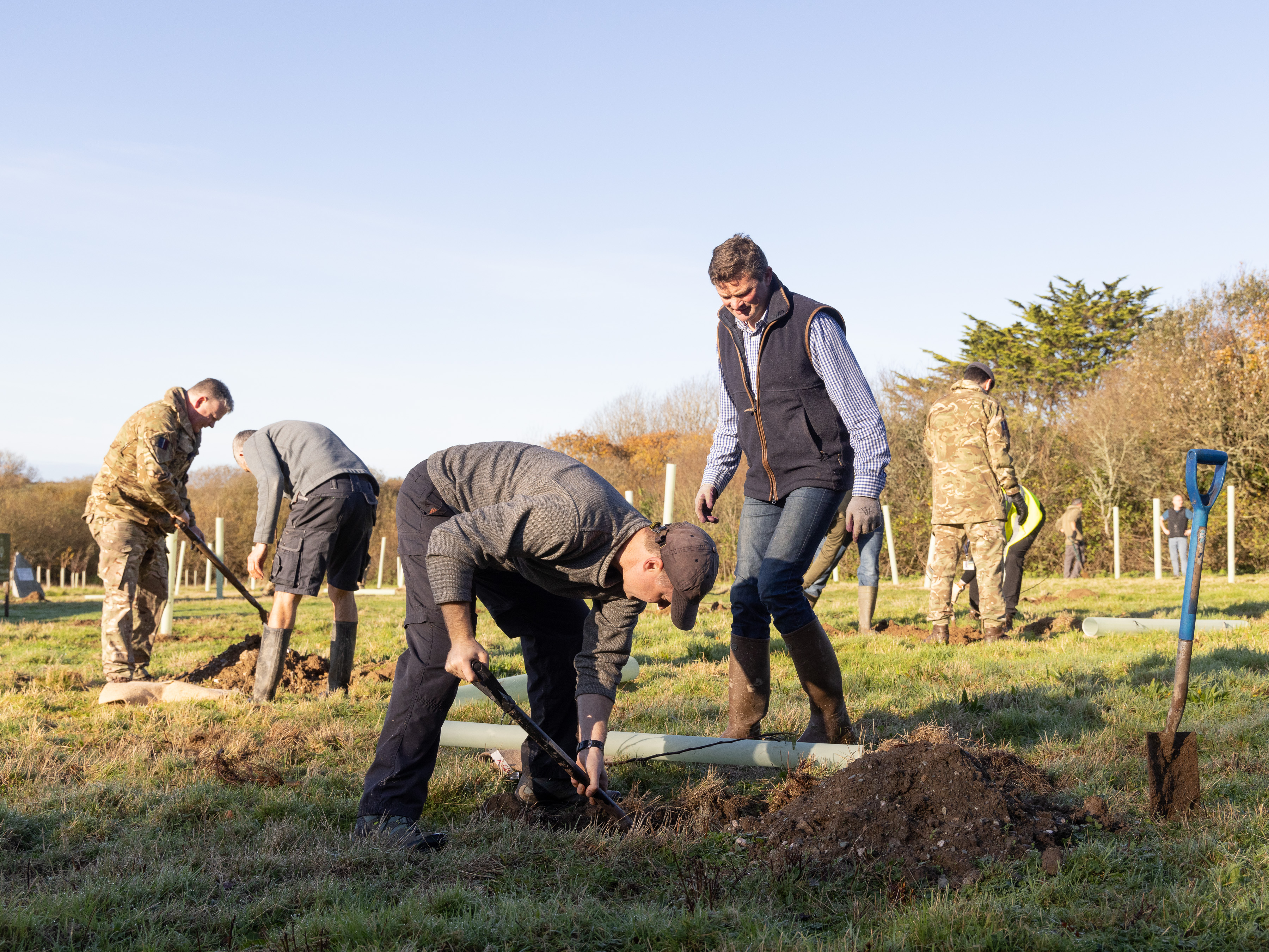
Fully supported through a network of the Station’s green-fingered volunteers, 370 apple, plum, pear, quince and cherry trees are being carefully planted across the estate as part of the Queen’s Green Canopy initiative; a legacy of the late Queen Elizabeth II which has been championed and further extended by King Charles III. It is clear though from the myriad of faces poised expectantly above each sapling being carefully lowered into its new home in the ground, that it’s not just the environmentally minded volunteers on the Station who are making this success happen. Dotted amongst the various uniforms are representatives from The Eden Project’s National Wildflower Centre, Cornwall Council’s ‘Forest for Cornwall’, VIVO Defence Services, and other environmental groups.
It’s really great that we can get communities together for projects like this, especially to get the children from local schools involved. Our aim at Forest for Cornwall is to cover the County in 8,000 hectares of new canopy cover following the Council’s announcement of a climate emergency back in 2019. This is one of the ways in which Cornwall will lead the way in reaching Carbon Neutrality by 2030.
Alex Forrester
Cornwall Council
And it is not just the planting of trees to capture carbon which supports a Carbon Neutral Cornwall, it also supports the Council’s Nature Recovery team. With a target of ensuring 30% of Cornwall’s wild spaces fall under the category of a ‘well managed ecosystem’ by 2030, the initiatives at RAF St Mawgan will become key to supporting that target.
Our aim is to work with the RAF and the rest of the Armed Forces to make sure we can create a real legacy from the event, not just for Falmouth but the whole of Cornwall. We are considering all sorts of options at the moment but working with Veterans to create memorial woodlands is one good example.
Alex Forrester
Cornwall Council
There is a noted rise in noise, as the volunteers who have been digging all day long are joined by a group of local children for some post school fun. Keen to get involved, the children quickly get to grips with spades and deer guards as they help get the final 20 trees planted. The delighted cries of children, running in between rows of fresh saplings provides an inescapable enthusiasm for all the volunteers and real sense of legacy. Crucial to fostering this feeling of community involvement is Kate Durham, the Station Youth Worker who runs the local Airplay; a youth club for Service Families and a hub for all things fun for kids on Station.
I’m trying to bring Airplay outdoors. The last 20 saplings have been saved for the children to plant as we feel it’s a great opportunity for them to learn and become involved in their own future,
We’re currently delivering a programme called Roots to the Future which revolves around the two large polytunnels recently installed here on Station. The kids learn to grow their own food, create ecosystems for all sorts of insects with bug hotels and wildflower gardens. The tree planting today is an extension of that and they’ve absolutely loved the hands-on experience; I think they’re looking forward to eating the fruit most of all.
Kate Durham
Station Youth Worker
And whilst this new orchard and its fruit trees are going to be premium carbon sinks, the significance of the fruit for the wider environment has not been overlooked. Steph Knights from the National Wildflower Centre at The Eden Project has been a long-term ally of the Station’s green initiatives and has been busy providing a helping hand and some crucial guidance.
These fruit trees are going to be a real refuge for some of our threatened pollinators, and as we know, its these pollinators who are vital for the whole of the ecosystems across Cornwall and the rest of the UK. I’m really pleased to see such a big turn out from the community today and the fact that these actions are taking place gives me real hope for the future in our battle against climate change and the loss of our biodiversity.
Steph Knights
National Wildflower Centre
The ecosystems at RAF St Mawgan have proved to be extremely important for several species experiencing significant decline. The camp is now one of the only locations in the South West which has been designated as a hedgehog release site (seeing Station personnel and Airplay children working with Newquay’s Prickles and Paws Hedgehog Rescue), in an attempt to halt the dramatic decline of numbers in the wild. The Station is also an important location on the map in creating an uninterrupted band of wild space around the Cornish coast for bees which are suffering a similar decline. The Beelines project, which is driven through the invertebrate conservation trust Buglife, is a crucial step in protecting pollinators, and RAF St Mawgan is a key location in supporting the charity’s targets.
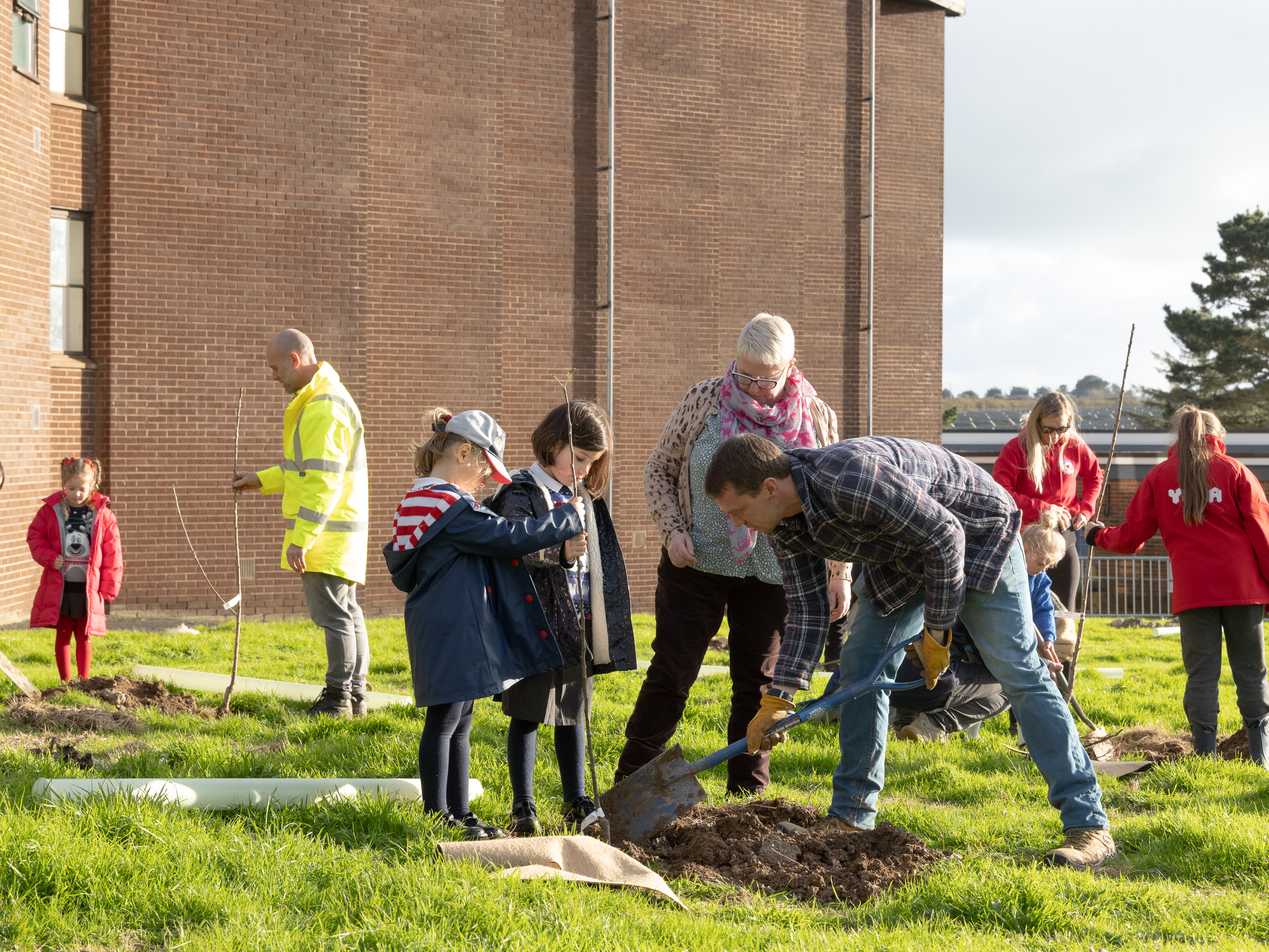
The relationship between RAF St Mawgan, The Eden Project and other environmental organisations is one which has blossomed in recent years as the Station has sought to maximise the value of its wild areas for the regional community.
One of the first steps we took involved recruiting the help of The National Wildflower Centre and Buglife, both organisations who came to RAF St Mawgan to help us understand how we could make small changes to have a big impact. Our vast and wild estate is an absolute haven for all sorts of flora and fauna, and the fact that most of that habitat is undisturbed makes us an ideal location to protect rare species. The Environmental Action Group has conducted a number of surveys to map the locations of plants and animals, and we’ve also worked with our industry partners to improve the sustainability of the estate. One of the easiest things we’ve implemented is to reduce the frequency and locations that our estate management contractors mow the grass. This simply allows all sorts of important plants to flower, especially during No Mow May, when great swathes of our grassy areas turn bright white and yellow with all the tiny daisies and buttercups; great news for our bees and other pollinators.
Mrs Sarah Kretowicz
Station Safety, Health and Environmental Advisor
Whilst it is still early days, the results of this one act have been fantastic and on the last Big Butterfly Count in summer 2022, the Station recorded a terrific increase in both the number and species of butterflies in its wild areas. It is not only pollinators that have seen benefits from this organisational change in behaviour. It was not long before skylarks, a beautiful ground nesting bird synonymous with the Cornish moorland and coastal areas, moved in to take advantage of the longer grass, quickly replacing the hum of industrial mowers with the serene songs of these iconic birds.
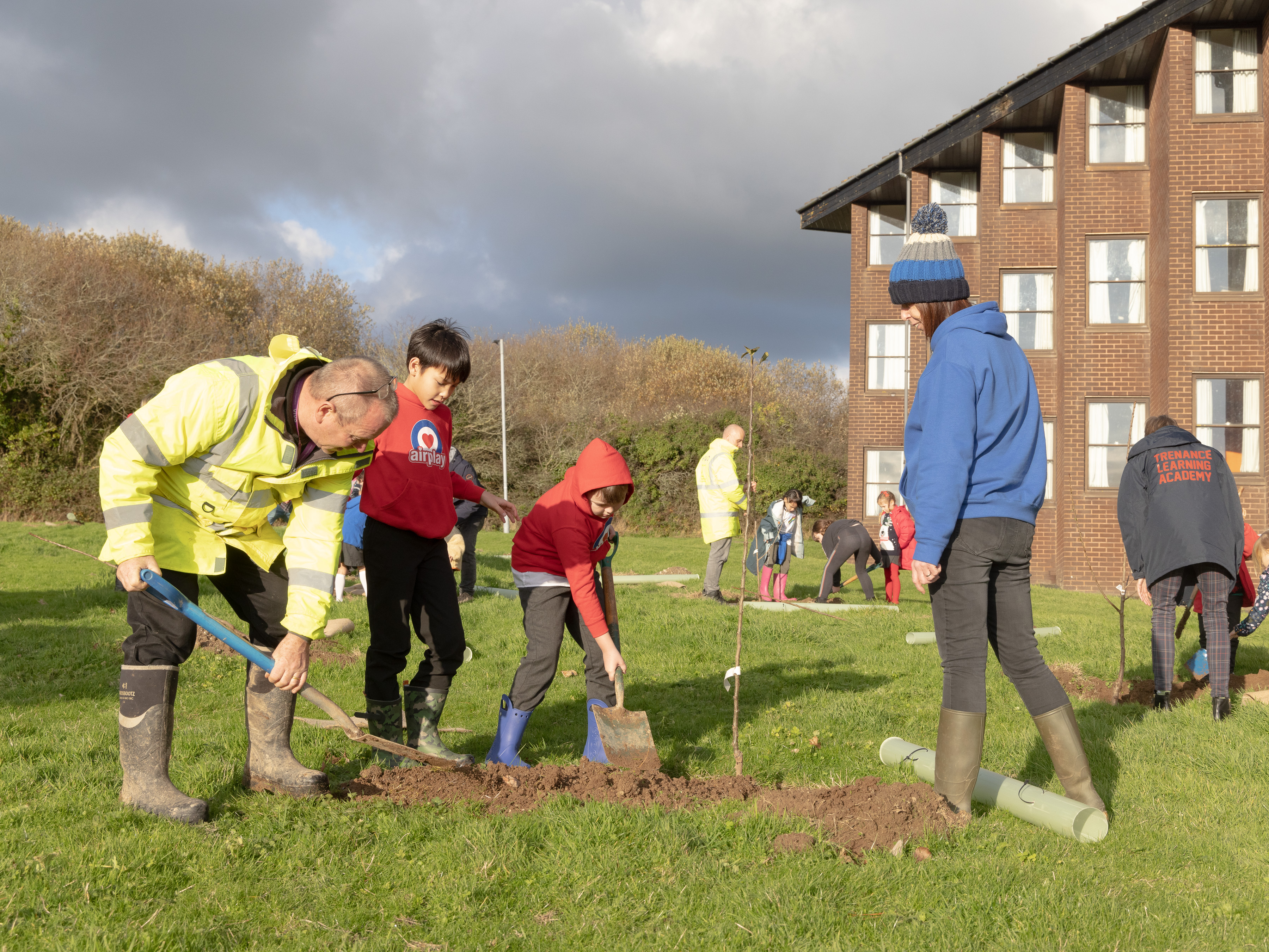
A sudden chilly gust serves as a reminder that the butterflies this year are long gone and the bees are safely tucked away in the beehives just down the road, busy guarding their precious supplies of honey. Little do they know that this will soon be filling jars as plans are afoot to create a special commemorative St Mawgan Honey, to mark the 80th anniversary of the formation of the Station.
Flight Lieutenant Jon Lord manages engagement across the South West for the camp and has seen the transformation at RAF St Mawgan first hand.
I was first here back in 2014 and the change in culture towards sustainability has been huge over the last few years. This is an important chapter in our 80-year story and whilst our role for Defence is again increasing, I know that we’ve set the foundations for sustainable growth. I’m proud that we are doing so much to preserve natural habitats and rare species, and I know that we are a great example in what can be achieved if the entire community pitches in, especially the bees; their 80th anniversary honey is going to be delicious.
Flight Lieutenant Jon Lord
The RAF have set an ambitious target when it comes to tackling climate change, with Chief of the Air Staff, Air Chief Marshal Sir Mike Wigston, announcing that he wants the RAF to be the first Net Zero Air Force by 2040. As a key member of the Cornish community though, RAF St Mawgan is doing everything it can to support Cornwall Council’s target of Net Zero by 2030.
One of the areas in which we’ve had the biggest gains on Station is our ability to protect and enhance biodiversity. Simply adjusting our contract to reduce the amount of mowing we did across the site, we saved over 400 litres of fuel in May alone, and over 100 litres of herbicide. It’s these small initiatives which drive long term change in the estate management plan and working with our Defence contractors is key. The polytunnels are another a great example. Not only have they been brilliant for raising awareness of mental health and well-being, but we are also growing food which can used by our contractors who deliver the catering on site. The RAF stations of the future are going to look very different to what they do today, with sustainable practices being central to everything we do.
Wing Commander Marshall Kinnear
RAF St Mawgan Station Commander
And the story is similar across many other estates. The RAF is working hard to tackle the effects of climate change, not just because it's the right thing to do from a moral perspective, but from a cost perspective as well, driving the development of new technologies that are more efficient and better for the environment. Across the RAF there is a rise in the use of e-scooters, a reduction in single use plastics, more efficient smart building technology utilising solar energy, an increasing use of biogas, synthetic aviation fuels, hydrogen powered aircraft and many more.
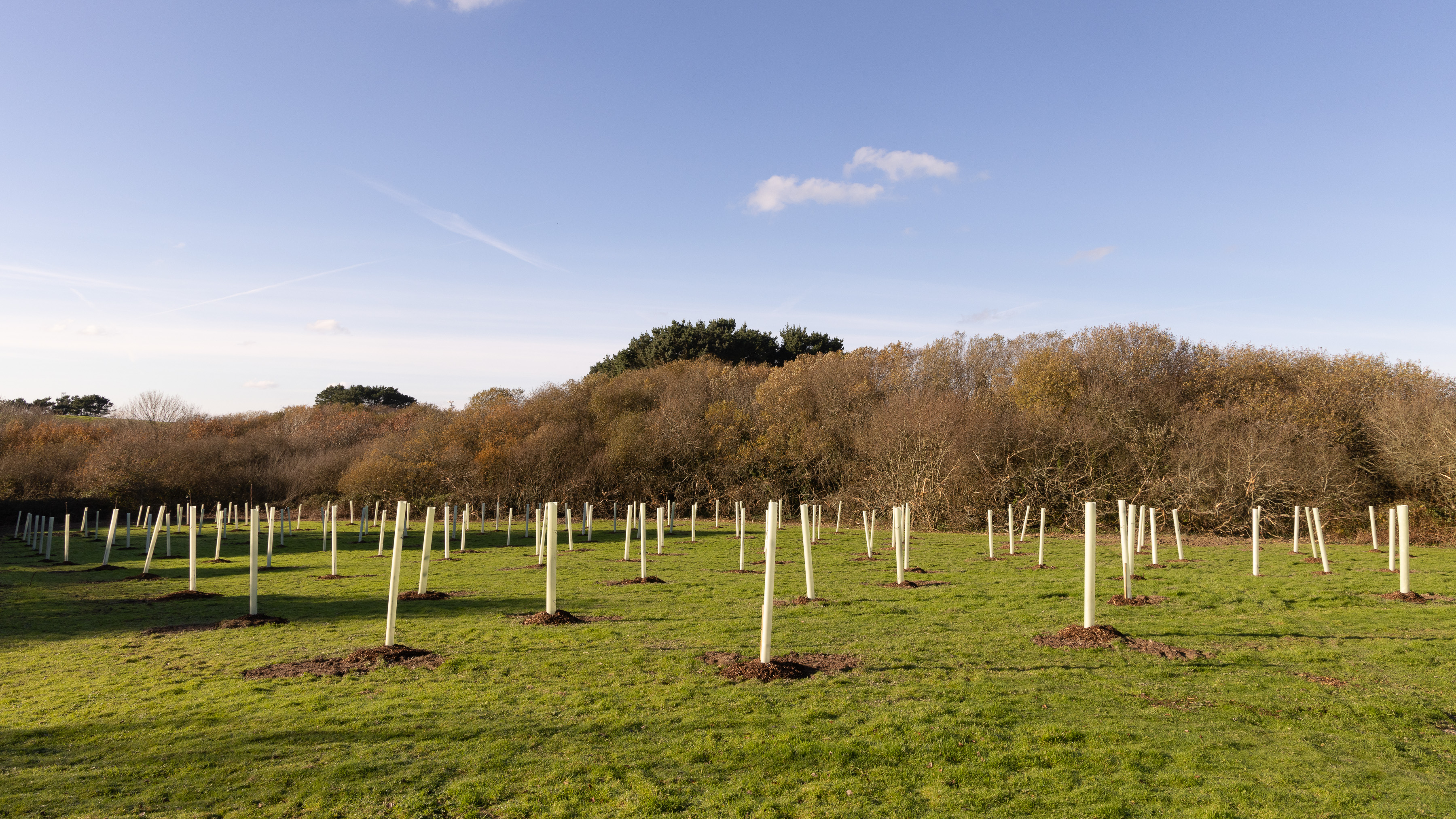
As the sun starts to dip below the adjacent sea cliffs, there is a flurry of activity to corral the volunteers around the last remaining cherry tree which lies next to its neatly dug hole and new Queen’s Green Canopy plaque, proudly marking the orchard as a legacy of the Platinum Jubilee. Councillor Martyn Alvey, Cornwall Council’s Portfolio Holder for the Environment and Climate Change, unveiled the plaque.
It’s really important for the people of Cornwall to know about what is going on here” he explains. “Part of our wider message about Cornwall becoming Net Zero is that organisations, companies and individuals also have to play their part, so if we can showcase what is going on at RAF St Mawgan, still one of the largest employers in Cornwall, then it will inspire other organisations to take action; especially since the methods you’ve employed haven't cost anything. As RAF St Mawgan’s role for Defence grows once more and is thrust back into the spotlight, it’s vital that we tell the story about how it's happening sustainably.
Councillor Martyn Alvey
Cornwall Council’s Portfolio Holder for the Environment and Climate Change
As the light finally fades and draws to a close the day’s hard work, the team disperse to warm up with a well-earned cream tea in the Mess; jam on first of course. It is clear that this corner of RAF St Mawgan will look very different with tomorrow's sunrise, and that the future for the Station is a bright one indeed.
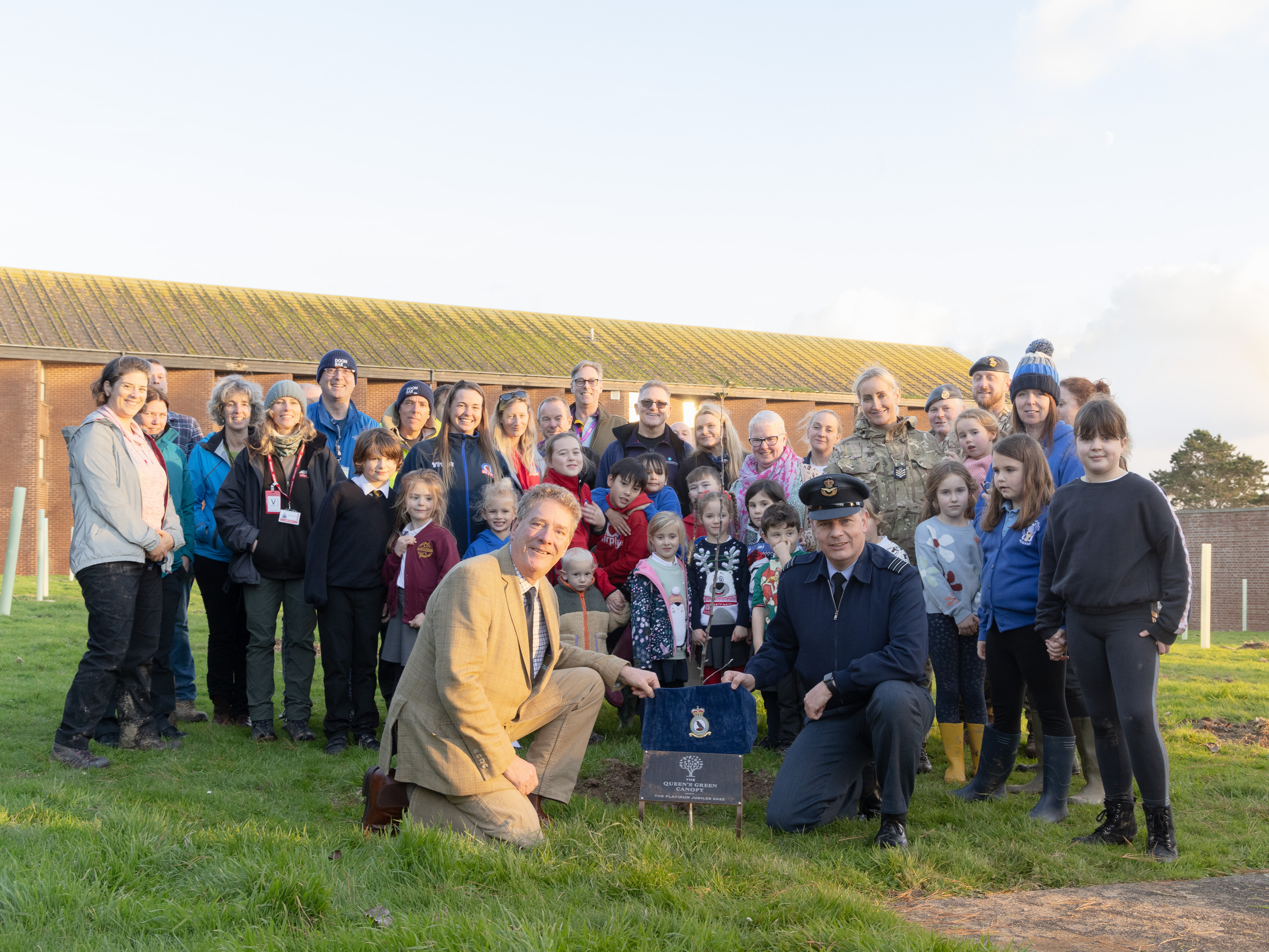
Read more about the RAF's aim to achieve a 2040 NetZero future





